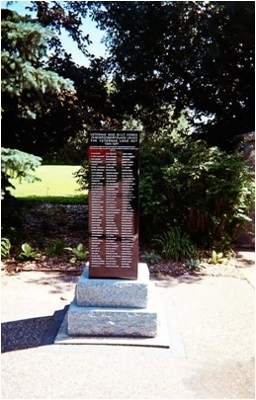Montgomery Place National Historic Site of Canada
Saskatoon, Saskatchewan

Montgomery Place Monument
© Parks Canada Agency | Agence Parcs Canada, K.MacFarlane, 2014
Address :
Montgomery Place, Saskatoon, Saskatchewan
Recognition Statute:
Historic Sites and Monuments Act (R.S.C., 1985, c. H-4)
Designation Date:
2016-06-06
Other Name(s):
-
Montgomery Place
(Designation Name)
Plaque(s)
Existing plaque: Montgomery Park, Saskatoon, Saskatchewan
Founded immediately after the Second World War, Montgomery Place is an excellent example of a Veterans Land Act subdivision and illustrates early benefits provided by the Veterans Charter. Government assistance allowed veterans to purchase a home here with only a small down payment. The original half-acre lots were a compromise between government aims for semi-rural acreages and owners’ preferences to live close to urban centres. The street names, memorials, and parks of this tightly-knit community create a neighbourhood of remembrance, honouring Canada’s military heritage.
Commemorative Intent
Montgomery Place was designated National Historic Site because: it is an excellent and intact illustration of the Veterans Land Act communities established following the Second World War. The VLA was a key element of the Veterans’ Charter, which provided a wide range of benefits to most veterans, ex-servicemen and women and the disabled; it retains many key elements of its original design including layout, lot size, set back, street names, green spaces and recognizable housing plans which contribute to the “sense of history” required in an historic district; it is a tight-knit community which is very aware of its origins and makes every effort to honour the original inhabitants and their wartime sacrifices. With its street and place names, signage, memorials and Remembrance Day services, it has emerged, over time, as a place of remembrance.
Source: HSMBC, Minutes, December 2014.